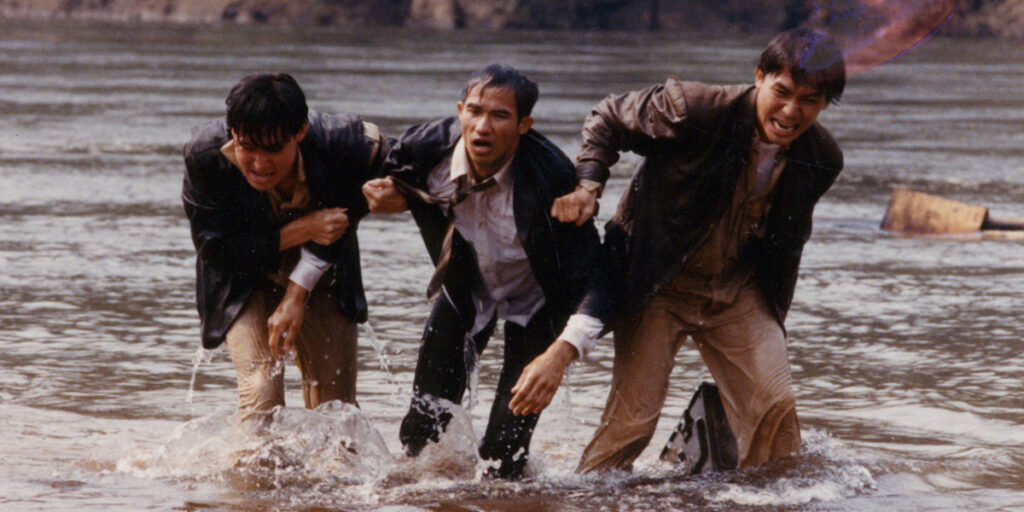
John Woo’s Bullet In The Head (1990) is his most fully realized portrait of male friendships. The film barrows much of its structure from The Deer Hunter (1978) but with significant narrative changes. The character arcs in Bullet In The Head, along with themes of war profiteering, suggest that Woo essentially fused aspects of Sergio Leone’s The Good, The Bad, And The Ugly (1966) and Duck, You Sucker! (1972) with the character driven war-time drama of The Deer Hunter.
Bullet In The Head charts the unravelling of a friendship between three men who have been close since childhood; Frank (Jacky Cheung), Paul (Waise Lee), and Ben (Tony Leung). After participating in a murder, the three men abandon their families (in Ben’s case his new bride) to try their luck in Vietnam. There they align themselves with Luke (Simon Yam) in a caper to rescue a nightclub singer (Yolinda Yam) and steal a case of gold. But as the Vietnam War rages on, the four men caught up in the conflict and Paul betrays them for the loot.
Bullet In The Head is full of larger than life emotions. For John Woo the bond between men is a greater love than the bonds between husband and wife, father and son, and between an individual and their country. These operatic emotions are expressed in thunderous scenes of action and violence. Desire, compassion, lust, and fear are all channeled into Woo’s highly stylized brand of gunplay. Bullet In The Head elaborates and advances this technique of emotional catharsis that Woo first famously employed in his break-out success A Better Tomorrow (1986).
Like Windtalkers (2002), Bullet In The Head was only released in a much shorter version than the filmmaker originally intended. Woo’s original three-hour edit of Bullet In The Head has never even been issued on home video (though Woo’s alternate ending has been released as a special feature). This accounts for some of the issues of pacing in the film. Three-quarters of Bullet In The Head are dedicated to establishing the relationships and experiences that shape the four leads. It’s only in the final quarter of the film that Woo addresses the fallout of Paul’s betrayal and Ben’s subsequent revenge.
The officially released ending of the film has Ben (whose only just met his son for the first time five minutes prior) and Paul “jousting” with their cars and machine guns on the docks where they played as teens at the start of the film. This sequence is a classic Woo finale with copious amounts of gunplay and squibs. The problem with this ending is that Ben, having just reconnected with his wife and met his son, risks too much to avenge Frank. The alternate ending to Bullet In The Head discards this epic finale for a more subdued and emotional one where Ben executes Paul in the latter’s board room.
While not the stylistic and technical accomplishment that Hard Boiled (1992) is, Bullet In The Head is still by far John Woo’s most personal film. Even with all of the segues into heroic bloodshed spectacles Bullet In The Head retains its emotional power and is intensely affecting. Woo, who edited the film himself, creates a tableaux of the ravages of war and the cost of Western Imperialism to the people of Hong Kong and Vietnam. This is the must-see John Woo film.
